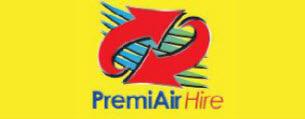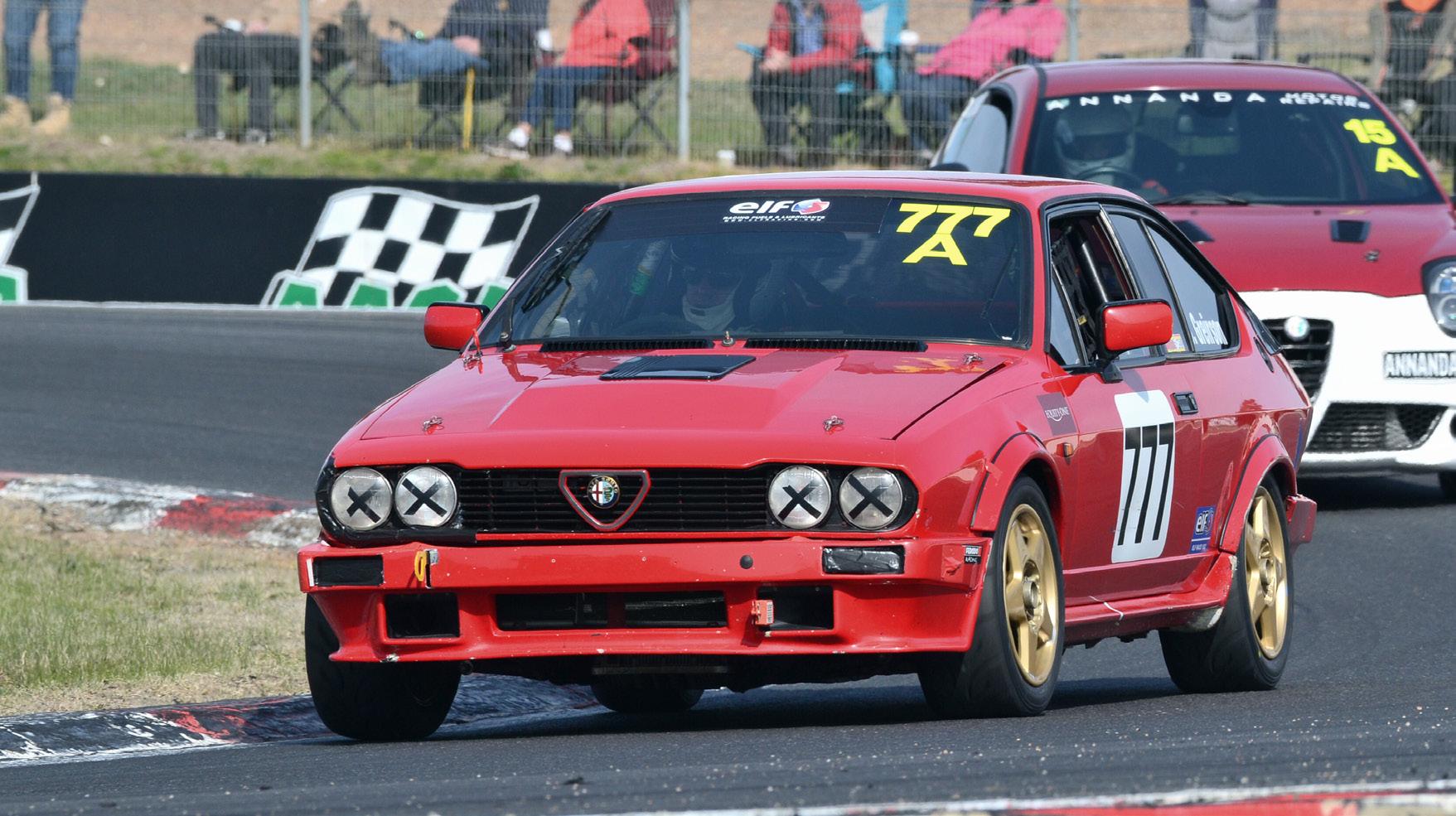











My BMW Supertourer is a recent acquisition from New Zealand. Originally a Johnny Cecotto car in the 1993 Supertouring World Cup at Monza, it came Australia in 1994 and was run as a Diet Coke car with Paul Morris driving in the early days of the Australian Supertouring Championship. It ran at Bathurst in 1994 with Craig Baird and Brett Riley, it had several other owners in Australia before going to New Zealand to Dennis Chapman. I ran the car at Phillip Island Historic in March last year plus WFOS and the Heritage Revival at Bathurst in October.
I did a couple of Super Touring races in 1998, the first in the Faber Castell BMW run by Bob Holden and the last round of the 1998 championship at Oran Park driving the third Brad Jones Racing Audi Sport A4. I have been the Michelin Motorsport Distributor in AU and NZ for 26 years and currently oversee Michelin Motorsport programs in the Asia Pacific Region.




Ian Smith Vic 1985 VK Commodore 6000 White/Blue/Red 123 Simon Anthonisz Jagermeister QLD 1993 BMW E36 3200 Orange 185 Chris Young Vic 1983 Holden Commodore 5700 White/Red
The Bacchus represented the first original race cars from (Alpha Street Productions) ASP. Named after the Greek god of wine these Lotus 7 inspired Clubman cars were powered by a variety of engines with a total of six cars completed under this name. This car is number 5 of 6 and was originally built for Bob Dwyer around 1963-64 and has always featured BMC engines and MOWOG drivetrains. Currently the car runs an Austin 1800 engine that has been converted by me to run North South. Alpha Street Productions (ASP) was founded by Ray Lewis and Rory Thompson with input from Peter Ivey, in the early sixties in Adelaide. The three had met through a common



interest in sportscars. Ray, the part owner of Lewis Brothers Buses amongst other businesses provided the premises for their venture at his family home of Alpha house on Alpha Street Kensington Park in Adelaide. Rory however provided the technical knowledge after earning qualifications in mechanical engineering from the South Australian Institute of Technology. Working initially on Lotus Sevens for Derek Jolly, Rory decided certain deficiencies of the Lotus design could be overcome with the design of a new chassis. This first attempt at an entire car was named the Bacchus. The first of the chassis was sold bare but a further 5 cars
Continued page 33.....




from page 31.... were built under the Bacchus name with a variety of drivetrains fitted. The business then had a name change to ASP and went on to design and build many road & race cars including the ASP 320,330,340,340B, 340C. Construction of sports cars continued in various forms until the early 2000s.
Scott Ball Started racing speedway in 1986 at the age of 16. First race car was an “Open Sportsman” (now known as a Wingless Sprintcars) then, after about 14 seasons moved



on to Speedcars while also getting interested (and competing) at Hillclimbs in a Mini. Around 2003 I decided to concentrate on motorsport on a sealed surface, initially still doing hillclimbs in my Mini Sports Sedan. Slowly progressed to circuit racing as family and mortgage commitments eased. Now I try to do between 5 or 6 events at various locations every year, depending on other commitments in either a Mini or the Bacchus sports car we have here this weekend.

6










The one stop for all leading motorsport brands Touring Car Legends & 5 Litre Cars - 10.40am Sunday - 17 mins
No Driver/Entrant
Touring Car Legends & 5L Touring Cars Supersprint 5L Touring Cars
19 Jacob Khouri Vic 2007 Ford Falcon 5000 Blue/White 51 Peter Xiberras Red Bull NSW 2014 Holden VF 4995 Cammo
66 Andrew Cook
Once again, the racing pedigree of the Alfa Romeo marque is at Winton with a field of some 26 cars eagerly anticipating a great weekend of racing.
2025 is the 115th year of Alfa Romeo and our grid of Alfa’s is well represented with 4 Categories – there is no ‘outright winner’ per se but ‘winners’ within each Category … but nobody told the guys leading the field.
As usual with these 26 Alfa drivers, we expect close racing throughout the field with Drivers averaging nearly 23 years racing experience across the entire field
Drivers come from NSW, Queensland, South Australia and Victoria
Usually 116 Alfetta or Giulietta or 75 and the Alfasud series
This Alfa Romeo grid is represented by 50 years



of racing - the rich heritage of the beautiful 105 GTV of the 60’s, the timeless 116 Alfetta of the 70’s and 80’s right through to the late 2000’s of the Turbo Giulietta 1.75 QV, Turbo Mito 1.4 QV and the FWD V6 3.2 Litre Busso engine of the GT and 147GTA
No other marque in Australia, far less the world, can claim such rich heritage of racing … and still be in Production in 2024
The largest Class is the Alfa Romeo Twin Spark Cup group with 8 cars doing battle for ‘The Cup’ – all 3E Series Production and running Production engines, control tyres and suspension with minimal modifications elsewhere.
The FWD Twin Spark Cup cars powered by the 16 Valve engine (2 spark plugs per cylinder) was run from 1998 through to 2009 and was utilised in the 147, 156, GTV and Spider. Continued page 39..........



From page 37.......The highly competitive group will do battle mid field but in reality fighting for 1st Place in the Twin Spark Cup TWIN SPARK CUP – 30% of the field are FWD Twin Sparks and the Class is growing rapidly – if wet weather hits … watch for these guys to lead the Field
Elsewhere there are a couple of ‘lions in sheep’s clothing’ out there with Mark Baggetto and Alfio Musumeci running similar Alfetta GTV 2 litre TURBO in Class A
In fact the ‘Class A’ group consists of 6 different models out of the 7 entrants: 2 litre Turbo, 2.5L and 3.0L V6 RWD and 3.2L V6 FWD, 1.75L Turbo FWD, 1.4L Turbo FWD, 25 years between their Production dates 5 of the Classic 105 and 116 models have backed up from the Group S Race - finely tuned machines that will definitely be



doing battle within their Class.
Having said this, like all the Alfa ‘Classes’ there will be some really close racing across the length and breadth of the Field.
Background information regarding the creation of the Twin Spark Cup
Whilst we have the Race format cars here today, at the heart of the creation of the Twin Spark Cup was to provide those setting out on their Motorsport career, usually through SuperSprints (SS) an opportunity to do so at a ‘reasonable cost’.
A good Twin Spark can be purchased for under $4000 (a lot less if you buy a NSW Stat Write Off where there may be minimal damage - and we have proved that to be case already).
Continued page 40....
Pick up the ‘right’ road registered car for say $4000 and go SuperSprinting …. No modification … just hit the track and have fun.
Developing their cars (and skills) from that point! What is the budget for a full race car configuration?
Cars that are here today, with full state level complied roll cage, Cup Regulation suspension package, exhaust and Control Tyres can definitely be achieved for under $10,000 – the first 147 (Car 65) was done for under $8000 and that included a Timing Belt and Water Pump change – the low budget was achieved as the car was a NSW Stat Write Off with extremely minor damage
The ‘Twin Spark’ engine was used between 1998 and 2009 and is a 16 valve 2 litre spec. The regulations on which this new series is based are to ensure minimal modifications, and abiding by the ‘equal & economic principle - this will ensure the closest possible racing you can imagine
The goal is to achieve a full grid of Twin Sparks by 2025 and that will include our Victorian colleagues (who currently run around 10 Twin Sparks at Super Sprint level
More information about the Alfa Romeo Twin Spark Cup can be found at www.twinsparkcup.com.au
Further information regarding these notes can be checked with Richard McKee (car #8) on 0419






5 Alfio Musumeci NSW 1982 Alfa Romeo 1750 GTV 2000 Blue 6 David Mckee SOS/Clay Bus NSW 2003 Alfa Romeo 147 T/Spark 2000 Red 7 Robert Mckee Clay Business NSW 2008 Alfa Romeo 147 T/Spark 1970 Black/Orange
8 Richard Mckee SOS/Clay Bus
Bradley Wilson Team Wilson
Mark Baggetto Vainmona Racing
Amante
Capraro
Nigel Catchlove
2003 Alfa Romeo 147 T/Spark 1970 Blue/Yellow
2004 Alfa Romeo 147 T/Spark 1970 Red
1979 Alfa Romeo 1750 GTV 2000 Red
1979 Alfa Romeo 1750 GTV 1962
Clara Sperandio Gulf, SAFE RACE Vic 1998 Alfa Romeo GTV T/Spark
Urs Muller Muller Motorsport
NSW 2002 Alfa Romeo 156 T/Spark 2000 Black
81 Peter Tillett donttellmyhusband NSW 2005 Alfa Romeo 147 T/Spark 1970 Grey
84 Ray Pignataro Laila and Me Vic 1983 Alfa Romeo Sud TI 1490 Black
86 John Floyd Vic 1978 Alfa Romeo 1750 GTV 1962 Blue
94 Rick Magoffin Squadra Veloce
NSW 2012 Alfa Romeo Giulietta 1742 White
98 James Ashby SA 1969 Alfa Romeo GTV 2000 1991 Blue 118 Nikolai Gratton The Selly Group Vic 2001 Alfa Romeo 156 1999 Blue 147 Matthew Cucuzza Midas Marrickville NSW 2002 Alfa Romeo 147 T/Spark 1970 Black
172 Evan Bottcher Sunk Cost Racing Vic 2001 Alfa Romeo 156 T/Spark 2000 Silver/Black 707 Carmelo Mirabella Ray White Group NSW 2003 Alfa Romeo 147 GTA 3200 Blue 777 Simon Greirson Freshly Squeezed NSW 1985 Alfa Romeo Alfetta GTV6 3200 Red
MyRaceLab runs on mobile phones and web browsers, and uses the power of Cloud Computing to perform analysis on data captured from both the mobile phone app, and data uploaded from common motorsport hardware devices that many drivers already have.
MyRaceLab has a “hardware agnostic” approach which allows drivers to upload data from a number of devices that record GPS and vehicle data, including Engine Control Units (ECUs), GoPro, AiM dashes loggers, MoTeC products, RaceBox Mini, SkyPro, and can even import sessions from lap timing apps such as RaceChrono and TrackAddict. The list of supported hardware continues to grow and the MyRaceLab team are constantly working on new device integrations.



One of the key benefits of MyRaceLab is that it works across all smart phone and computer devices, and the user interface is simple to use yet powerful and informative. No more ugly data and complex graphs!
What do I need to use MyRaceLab? The minimum requirement to use MyRace Lab is a smartphone. However, the GPS receivers in most smartphones are not of the quality required for accurate race line analysis in most motorsport environments. The best results come from using accurate GPS and vehicle data capture tools and either pairing these with the MyRace Lab app on your smartphone, or uploading data after the session. A full list of supported hardware is available on MyRaceLab’s website, and if your favourite device is not listed then just contact the MyRaceLab team as we are constantly adding support for additional devices.